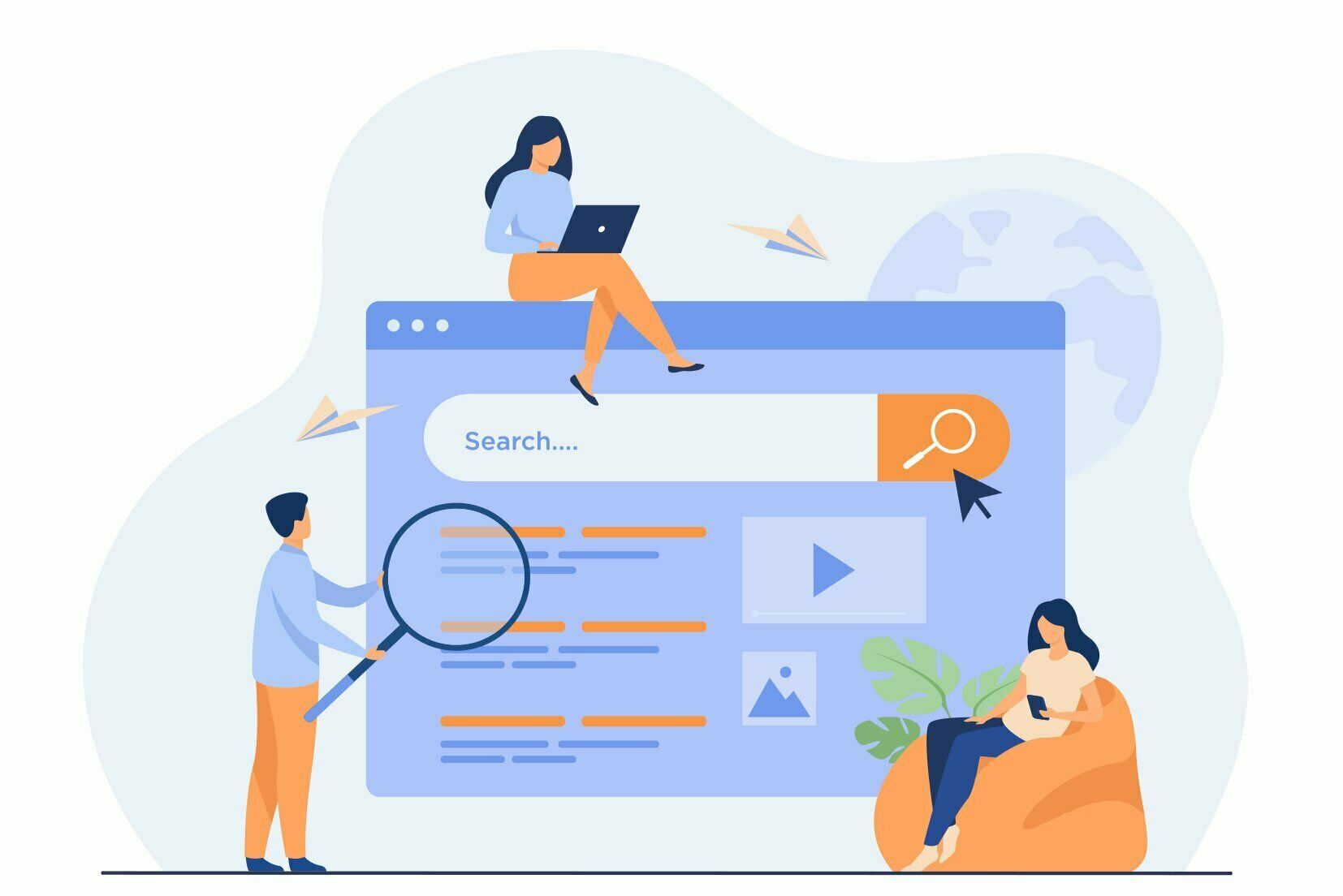Search engine results pages (or SERPs) might seem simple, but there’s more to them than first meets the eye. It’s important to remember that SERPs are the most important pages in digital marketing — don’t overlook them!
What are SERPs
Search engine results pages are the pages that users see when they search for something online using a search engine like Google.
When users enter keywords or search terms into a search engine, the page they are presented with is a unique SERP.
Every SERP is different, even when the same search terms are typed into Google. This happens because search engines create a customized experience for users by factoring in location and search history.
SERPs are developed to optimize the experiences of users. Relevant terms are highlighted, sites are listed according to relevance, and users don’t have to click through 20 different websites until they find the information or the product that they’re looking for.
Type of search results
SERP results usually fall into two categories: organic and paid search results.
Organic results
Organic search results refer to content that appears in a SERP because of algorithms, keywords and SEO strategizing, not because organizations pay to have their content featured.
Organic search results typically fall into three categories: informational, navigational, and transactional searches.
Informational searches
Informational searches reveal content on a specific subject that the user is curious about. This can be anything from how to keep your cactus alive in the winter to a listicle outlining the best coffee machines to invest in. Users who search for pure information are usually not looking to buy anything, at least not right away.
Navigational searches
Navigational searches are all about locating a specific website. This will narrow the search considerably, and these users are almost always looking for a specific result, not to branch out to other available options.
Transactional searches
These are the searches where users are looking to make a purchase. That means that transactional searches are where it counts to be near the top of the SERP.
Paid results
Paid results are sites that businesses and organizations pay to feature on google search pages.
How SERPs are organized
SERPs are organized based on relevance. Search results that are more relevant to the query feature closer to the top of the list.
Getting a webpage near the top of the search list is important, considering that more than 50% of traffic stems from organic search results.
How to improve your SERP position
SEO
The easiest place to start is by improving your SEO strategy. Our marketing specialists at Creative Coco’Nuts can ensure you have the information and the tools you need to make to take your SEO to the next level.
Include more keywords that users use in their search terms and pay attention to short-tail and long-tail keywords to set yourself apart from the competition.
Improving your SEO will make sure that Google views your site as credible.
Keyword placement
Consider using all or part of a keyword phrase in your page URL, in your page titles, and in your headings and subheadings.
The more keywords, the better (unless your content starts to become unnatural and clumsy).
Quality content
This may seem like an easy one, but it’s important that your content is useful, accurate, and engaging. Then Google will see it as more credible be more likely to list it higher on a SERP.
Link building
Link building is another great way to improve organic traffic and improve your SERP ranking.
It is the process of including links to relevant content from outside websites, and also including internal links to different pages on your website.
Search engines like Google crawl these links to determine the authority and credibility of your site.
The more quality websites that you link on your website, and the more outside websites that link to your website for your content, for one of your blog posts, or to showcase one of your products, the higher you will rank in Google SERPs.
Alt tags
When including images or videos in your content, don’t forget to use alternative text descriptions to describe them.
This helps search engines more easily locate your page and also improve your SERP ranking.




